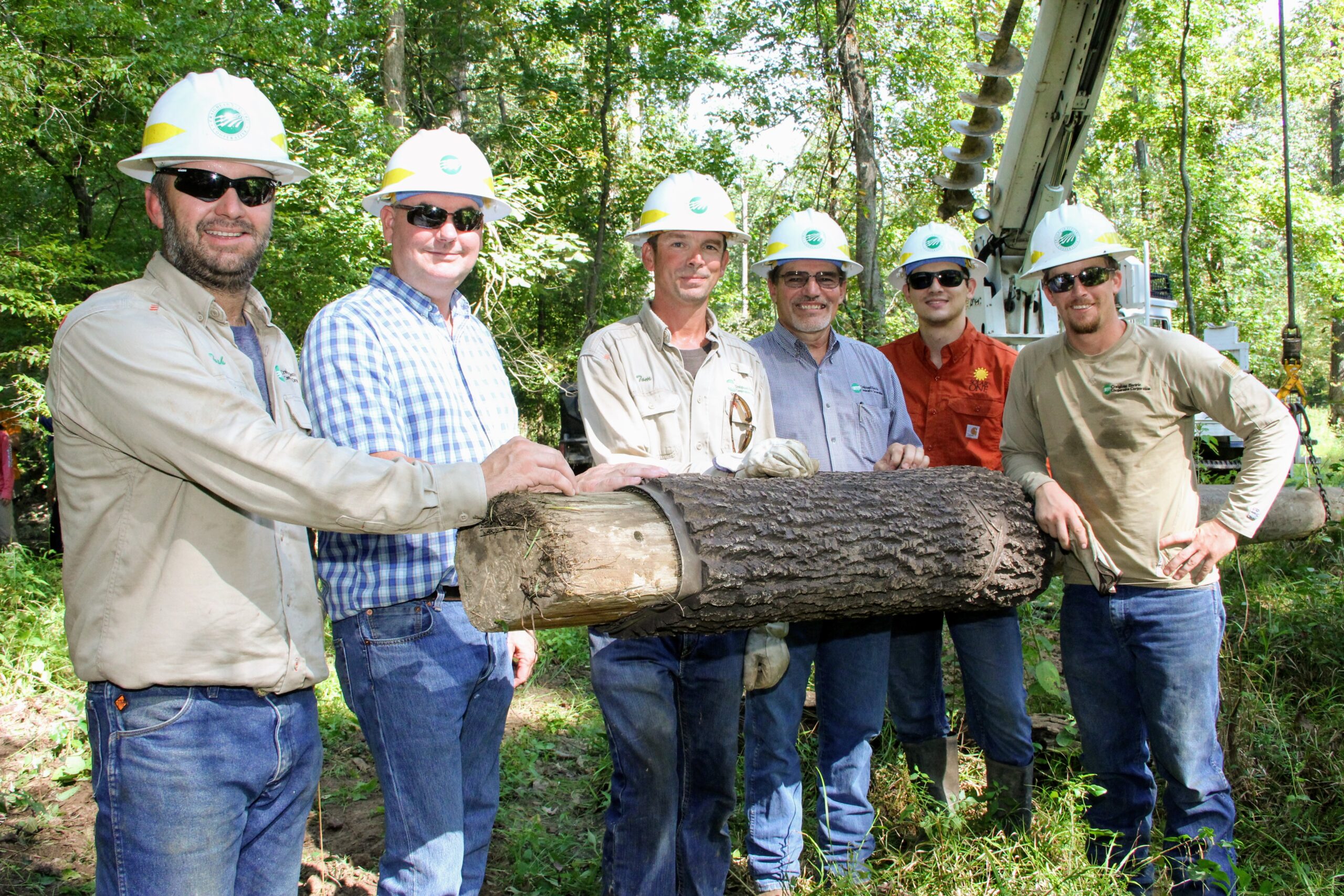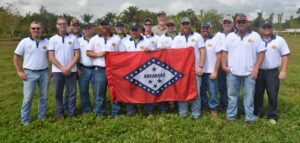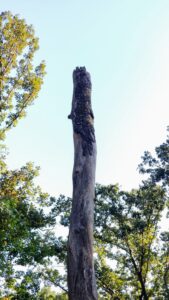
In the swampy forests of Shirey Bay Rainey Brake Wildlife Management Area near Strawberry stands a lone tree snag. This unassuming trunk no longer has leaves or branches, the tree itself died years ago, but one feature makes it one of the most noteworthy trees in the forest: its bark. A single sheet of bark clings loosely to the top of the tree housing a colony of Indiana bats, an endangered species that is native to Arkansas. Dozens of the small flying mammals cling to the tree between the trunk and the bark for shelter. You can hear their scratching and chirping from the base of the tree, and this is the only maternity roost currently known in Arkansas.
The maternity colony was located at Shirey Bay as a result of a project sponsored by the U.S. Fish and Wildlife Service, the U.S. Forest Service, the Arkansas Department of Transportation, Arkansas State University and the Arkansas Game and Fish Commission. Female Indiana bats were captured in April at a cave they used for hibernation in Newton County, and one was followed as she migrated eastward across the Ozarks and finally settled down at Shirey Bay Rainey Brake WMA.
It is fall now, and the roost has been abandoned for the season, but researchers fear the tree where the roost is located is at risk of falling before the colony can return next year. They also want to offer increased roosting opportunities for other Indiana bats to help in the recovery of the species. After coordinating with many partners (Arkansas Game and Fish Commission, Arkansas State University, SWCA Environmental Consultants, and the U.S. Fish and Wildlife Service’s Arkansas Ecological Services Field Office) biologists developed a plan to help ensure long-term survival of the colony. They would place special surrogate structures to encourage the continued use of the area by the Indiana bats.
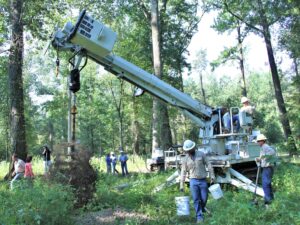
Erecting such tall structures in the middle of an isolated forest would prove challenging. There are no public roads leading to the area, so typical heavy machinery is out of the question. Luckily, the local electric cooperative has some experience putting tall poles in the ground in hard-to-reach places. Craighead Electric Cooperative agreed to use their tracked digger-machine to transport several recycled 30-foot utility poles to the site, dig the holes, erect the poles and donate all the manpower to do so.
On a hot September day, all involved parties trekked out to the location to put their plan into action. The wide tank-tracks on the digger-machine navigated the muddy logging roads with ease, and the attached auger made quick work of the 6-foot deep holes needed to place the poles. The slick poles were made more usable for the bats by scoring the sides so tiny claws could grip them more easily. The tops were covered in BrandenBark, an artificial bark used in zoos and theme parks.
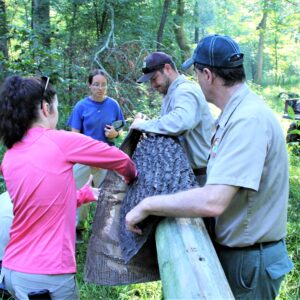
These rubber-like sheets of material would fool the most discerning of bats, looking and feeling just like the real thing. Three sheets of the material were donated to the project by The Nature Conservancy. The resulting structures will last much longer than the deteriorating tree they are replacing, hopefully providing a suitable habitat for future generations of Indiana bats to return to Northeast Arkansas.
Craighead Electric Cooperative would like to thank Arkansas Game and Fish for inviting us to participate in this conservation effort. We usually discourage wildlife from making their homes on power poles! In this case, we hope the colony of endangered Indiana bats enjoys their new habitat.

